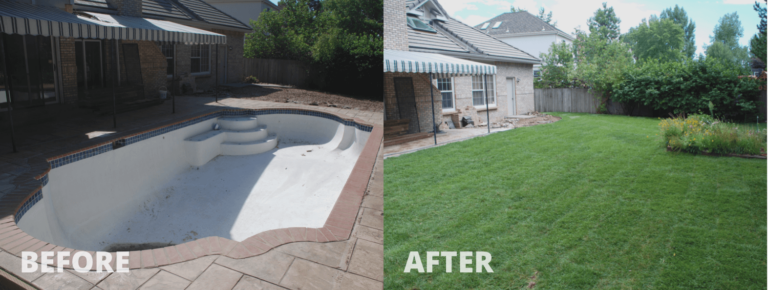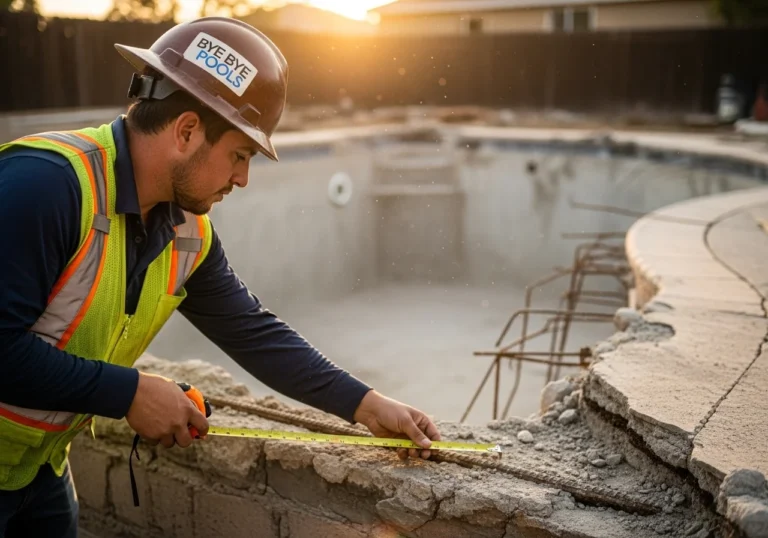How to Choose the Right Contractor for Pool Removal: Top Factors to Consider
Deciding to remove a swimming pool from your property is a considerable decision, and finding the right contractor to ensure a smooth and successful process is crucial. When navigating through the various options, it’s essential to be equipped with the right information and the ability to assess each contractor’s reliability and quality of work. This article aims to help you choose the best contractor for your pool removal needs.
In order to make an informed decision, you should be aware of the different methods of pool removal and the factors that can impact the overall cost, time, and complexity of the project. Additionally, it is important to familiarize yourself with the permits and legal requirements for pool removal in your area, as these may vary. By understanding these aspects, you can better evaluate potential contractors and their proposed plans for your pool removal.
When selecting a contractor, it’s important to consider their experience and reputation, their communication and planning abilities, as well as the quality and efficiency of their work. By focusing on these key elements, you will be able to make a confident decision and ultimately select the best pool removal contractor to suit your specific needs and requirements.
Evaluating Contractor Credentials
Assessing Experience and Reputation
Evaluating a contractor’s credentials begins with assessing their experience and reputation. To do this, consider how long they have been in business and their track record in pool removal. Check for online reviews and testimonials on reputable platforms like Google and Yelp. Don’t hesitate to ask the contractor for references and follow up with past clients to gain insight into the contractor’s work ethic and quality. Additionally, seek referrals from friends, family, or neighbors who have recently hired a contractor for pool removal services.
Potential red flags include a high number of negative reviews, an unresponsive or evasive contractor, and a lack of insurance coverage.
Understanding the Bidding Process
The next step is to understand the bidding process for pool removal contractors. Request written estimates from at least three reputable contractors. This will help you compare costs, services, and timelines for the project. When reviewing the bids, look for:
- Detailed scope of work
- Timeline for completion
- Materials and equipment to be used
- Labor and equipment costs
- Payment terms
Should there be any significant discrepancies between the bids, seek clarification from the contractor. Be cautious of bids that are significantly lower than others, as this may signify shortcuts or lower quality materials.
Verifying Insurance and Liability
Finally, it is crucial to verify insurance and liability coverage for any contractor you consider. Liability insurance protects both the property owner and the contractor in case of accidents, damages, or incomplete work. Contractors should have the following insurance coverages:
- General Liability Insurance
- Workers Compensation Insurance
- Automobile Insurance
Ask the contractors for proof of insurance, and verify its validity with the insurance provider. Ensure the coverage is adequate for the scope and scale of your pool removal project.
By carefully evaluating contractor credentials, assessing their experience and reputation, understanding the bidding process, and verifying insurance and liability coverage, you can confidently choose the right contractor for your pool removal project.
Navigating the Pool Removal Process
Types of Pool Removal
There are two main types of pool removal: full pool removal and partial pool removal. In a full pool removal, the entire swimming pool structure, including walls and floor, is demolished and removed from the yard. This method is often preferred if you intend to use the yard space for a different purpose. In a partial pool removal, only the top layer of the pool is removed, and holes are punched into the bottom to allow water drainage. The remaining cavity is then filled with dirt, and the area is compacted. Partial pool removal is generally more cost-effective but may have limitations on future landscaping or property uses.
Permitting and Regulations
Before starting a pool removal project, it’s essential to research and obtain any necessary permits. Depending on your location, removing an inground pool may require approval from local authorities. Pool demolition contractors can help navigate this process and ensure compliance with all relevant regulations. Failure to obtain proper permits can result in fines or legal complications.
Assessing Costs and Timeline
The cost of a pool removal varies depending on factors such as the size of the pool, the pool removal method chosen, and your geographical location. On average, partial pool removals range from $5,000 to $10,000, while full pool removals generally cost between $10,000 and $15,000. Keep in mind that these costs can fluctuate based on unique factors inherent to your specific project.
To better understand the overall timeline involved in a pool removal, consider the following steps:
- Selecting a pool demolition contractor
- Obtaining permits, if necessary
- Demolition process (this usually takes a few days)
- Removal of debris (may take a few days to a week)
- Backfill and compaction (can take a week or more)
- Final landscaping or yard work (optional)
Considering the quality and experience of your pool removal contractor and their ability to adhere to the projected timeline, can greatly impact the overall success and satisfaction with your pool removal project.
To choose the right contractor for your pool removal, prioritize factors such as experience, knowledge of permitting and regulations, and accurate cost estimates. Adequate preparation and a well-executed plan will ensure a smooth pool removal process and increased enjoyment of your reclaimed yard space.







